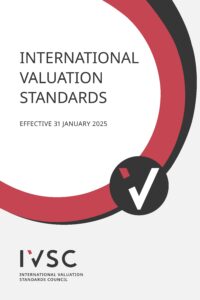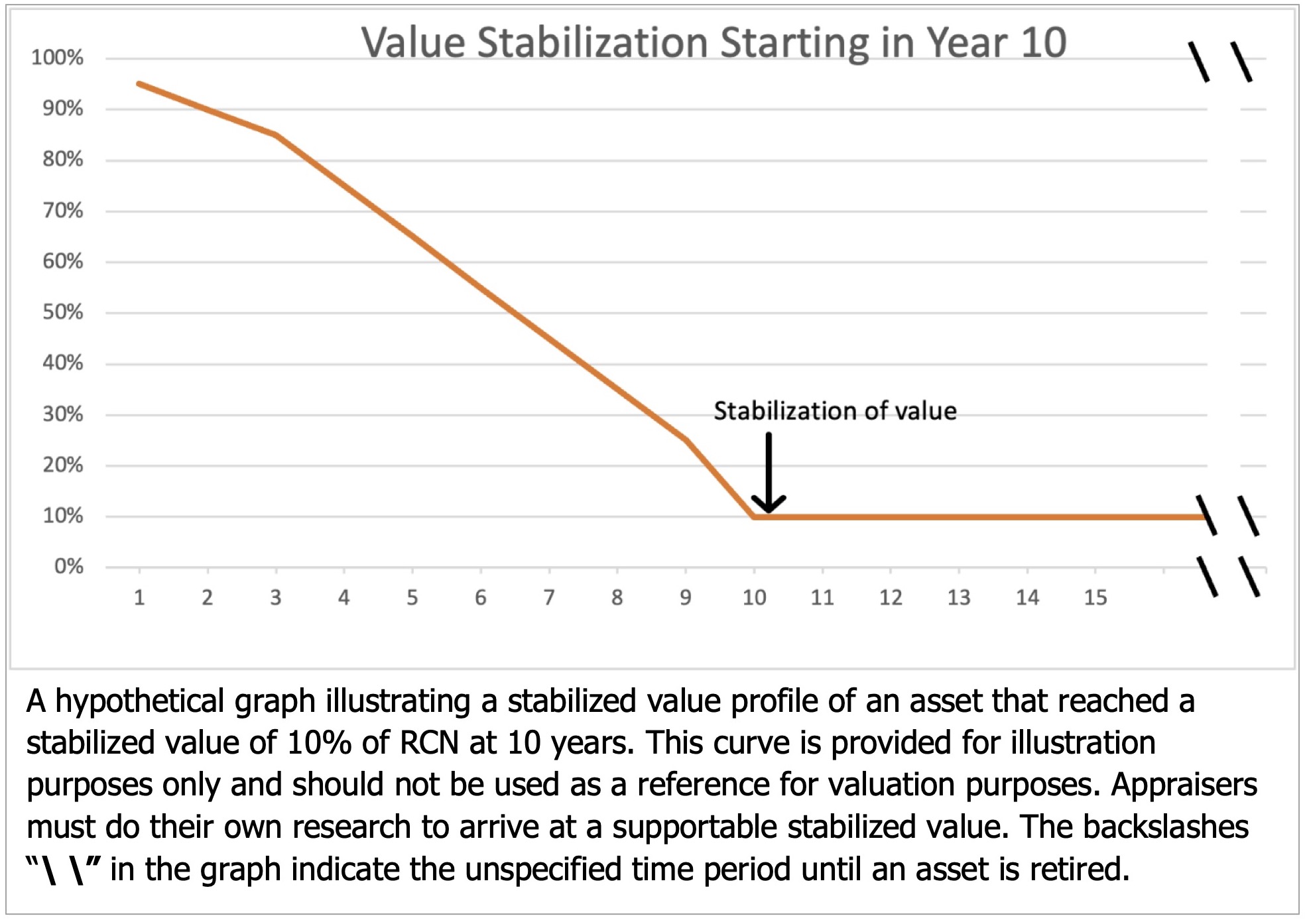 In 2018, The Appraisal Foundation published A Bridge from USPAP to IVS. Targeted primarily to appraisers already familiar with USPAP, it’s an invaluable and concise resource for producing appraisals in compliance with International Valuation Standards (IVS). The introduction reminds readers that the standards are “more similar than different:”
In 2018, The Appraisal Foundation published A Bridge from USPAP to IVS. Targeted primarily to appraisers already familiar with USPAP, it’s an invaluable and concise resource for producing appraisals in compliance with International Valuation Standards (IVS). The introduction reminds readers that the standards are “more similar than different:”
Many differences in the standards are superficial and are due to different presentation and organization. Some differences are unavoidable because the IVS have to be applicable across the globe, whereas USPAP is designed for use within the United States and has to reflect U.S. law and practice.
While USPAP devotes a separate section (Standards 3 & 4) to defining and regulating appraisal review, IVS has traditionally been less informative. So, it’s been interesting to notice that the 2025 edition of IVS (effective January 31, 2025) places considerably more focus on the review process and quality control than previously.
Review Assignment Situations
IVS 2025 Glossary (section 10 Defined Terms) offers three new definitions regarding valuation review, replacing the previous single definition of Valuation Reviewer in IVS 2017, and providing three separate choices of valuation review reports, none of which includes an opinion of value:
10.35 Valuation Process Review: An analysis by the valuer to assess compliance with IVS or a component of IVS applicable as at a valuation date. This does not include an opinion on the value.
10.36 Valuation Review: A valuation review is either a valuation process review or a value review or both.
10.40 Value Review: An analysis by the valuer applying IVS to assess and provide an opinion on the value of another valuer’s work. This does not include an opinion on the valuation process.
The separation of a valuation review report from a valuation report is more thoroughly addressed in IVS 101 Scope of Work (section 30) and IVS 106 Documentation and Reporting (section 40) discuss more thoroughly the difference between valuation reports and valuation review reports. Review reports—which never include an opinion of value; if an opinion is required, a valuation report must be produced.
USPAP’s definition of appraisal review, unlike the IVS definitions, does not separate process review and value review:
APPRAISAL REVIEW: (noun) the act or process of developing an opinion about the quality of another appraiser’s work (i.e., a report, part of a report, a workfile, or some combination of these), that was performed as part of an appraisal or appraisal review assignment; (adjective) of or pertaining to an opinion about the quality of another appraiser’s work that was performed as part of an appraisal or appraisal review assignment.
Standards Rule 3-3, Appraisal Review Methods, includes a clarifying comment in Section D regarding the focus of an appraisal review report:
The subject of an appraisal review assignment may be all or part of a report, a workfile, or a combination of these, and may be related to an appraisal or appraisal review assignment.
USPAP SR 3-3 also addresses the issue of a value opinion, or opinion of value, in Section C, which states the requirements for reports that “include the reviewer developing his or her own opinion of value or review opinion …”
A crucial difference between the Standards is that IVS provides three separate choices of valuation review reports, none of which may include an opinion of value, while USPAP provides one appraisal review definition, which includes all the possibilities inherent in the scope of a review assignment and may also include an opinion of value.
Review Reporting
IVS106, documentation and reporting, addresses the requirements of valuation review reports in section 40, Valuation Review Reports (section 40). The IVS 2025 edition has considerably more detailed must requirements than the IVS 2017 edition:
40.01 A valuation review is not a valuation. A valuation review must state whether the review is a valuation process review or a value review or both:
(a) a valuation process review addresses compliance with IVS,
(b) a value review addresses the reasonableness of a value.40.02 If a value is provided as part of the value review, then this is a valuation (see section 30 of this standard).
40.03 A valuation review must convey the following, at a minimum:
(a) agreed scope of the valuation review,
(b) assets and/or liabilities reviewed,
(c) the identity of the valuation reviewer,
(d) the identity of the client,
(e) intended use,
(f) intended users, if applicable,
(g) significant or special assumptions and/or limiting conditions pertaining to the valuation reviewed,
(h) the use of a specialist or service organisation if used, as part of the valuation review,
(i) procedures undertaken and the documentation reviewed,
(j) the valuation reviewer’s conclusions about the work under review, including supporting reasons, and
(k) the subject of the review,
(l) the date of the valuation review report,
(m) the version of IVS that is applicable to the review.40.04 In all instances the valuation review report must be sufficient to describe the conclusion reached and be considered reasonable by the valuer applying professional judgement.
IVS, unlike USPAP, does not provide an option for an appraisal review with an opinion of value, and in fact repeatedly reminds us, as in 106 40.01, that “A valuation review is not a valuation.”
USPAP Standard Rules allowing ASA appraisers the opportunity to combine a review with an opinion of value in one report can be helpful. I’ve discovered that a single report — providing an independent opinion of value within a review report — to be especially useful in litigation assignments. Triers of fact often find multiple reports on the same issue confusing; some courts therefore limit the number of expert reports allowed. I’ve used this combined approach to help courts better understand complex issues.
I’m presenting a session on this topic at the ASA conference October 19-21, 2025, in San Juan, Puerto Rico. Alexander Aronsohn, FRICS, a member of the IVS Council, addresses this issue in a Q&A following his presentation, Expedition into the Valuation Review Compliance with the International Valuation Standards, at the conclusion of ASA’s Global Valuation Review Symposium World Tour, Part 1, on February 23, 2025. Aronsohn shared that the IVS Council is exploring the possibilities of a Value Review with an opinion of value option.
Stay tuned for updates on this topic!
USPAP Standard 4, Appraisal Review, Reporting broadly states that “In reporting the results of an appraisal review, an appraiser must communicate each analysis, opinion, and conclusion in a manner that is not misleading,” and goes on to list in similar detail, just as IVS does, all content that must be included in the review report.
It’s also worth noting that while the IVS discourages the use of oral reports, USPAP matter-of-factly includes oral reports within the definition of reports, addresses specific requirements of oral reports in each of the Development Standards, and additionally stipulates in the Record Keeping Rule that “ A written summary of an oral report must be added to the workfile within a reasonable time after the issuance of the oral report.”
Scope of Work for Reviews
First of all, it’s important to understand that while USPAP and IVS both use the term Scope of Work, the meanings are different. In this instance, George Bernard Shaw’s insight of “being separated by a common language” can appropriately be applied to IVS and USPAP.
IVS 101 10.01 states:
A scope of work (sometimes referred to as terms or letter of engagement) describes the fundamental terms of a valuation or valuation review. These include but are not limited to the asset(s) and/or liability(ies) being valued, the intended use of the valuation and the responsibilities of parties involved in the valuation.
IVS 10.02 adds, “A scope of work for a valuation review describes the fundamental terms such as the components of the valuation or value being reviewed.”10.03 stipulates that “A scope of work is required for all valuations and valuation reviews,” and 10.04 requires that “The client and the valuer must agree on the scope of work and that [it] is appropriate for the intended use.”
IVS 30.02 lists the minimum requirements of a review assignment scope of work, while 20.01 specifies the requirements of the valuation report’s scope of work; a valuation report’s scope of work is appropriately scrutinized as part of the valuation review process.
USPAP defines Scope of Work as “the type and extent of research and analyses in an appraisal or appraisal review assignment” and states the scope of work in three parts:
- Defining the problem to be solved
- Applying the necessary analytical methods to solve the problem
- Communicating the results through a written or oral report
While an agreement with the client about the work to be performed is relevant for the first step under USPAP, defining the problem to be solved, a USPAP valuer or reviewer alone is responsible for determining steps 2 and 3: solving the problem and communicating the results.
USPAP and IVS agree that the valuer alone is responsible for the actual valuation analysis and conclusions.
It’s important to realize that while IVS’s “scope of work” includes what USPAP refers to as defining the appraisal problem, IVS, as mentioned previously, provides specific procedures to be followed in determining the scope of work and communicating it to the valuation client.
In short, while IVS and USPAP use the term “scope of work” to mean different things, this doesn’t create a conflict between the Standards. When comparing Standards, it’s important that we look beyond any initial confusion created by the relative use of terms to understand the shared principles promoted by USPAP, IVS, and other appropriate Standards.
Process of Reviewing to Appropriate Standards
USPAP, in discussing review, uses the term “compliance” only twice; first, in a Comment on Standards Rule 3-2 (c), as part of the requirement to “identify the purpose of the appraisal review” and again in a Comment on Standard 4, stating that “The substantive content of an appraisal report determines its compliance,” a statement that also appears in the Reporting Standard for each discipline.
In accordance with the concept that “the substantive content determines compliance,” ASA ARM courses focus on the specific guidance in an important comment elaborating on Standards Rule 3-3, part of Appraisal Review Methods, which broadly states:
In developing an appraisal review, a reviewer must apply the appraisal review methods and techniques that are necessary for credible assignment results.
USPAP narrows its focus in Section B, concluding with the Comment’s clear and direct guidance about what a reviewer should be concerned with:
(b) When necessary for credible assignment results in the review of a report, the reviewer must:
(i) develop an opinion as to whether the report is appropriate and not misleading within the context of the requirements applicable to that work; and
(ii) develop the reasons for any disagreement.
Comment: Consistent with the reviewer’s scope of work, the reviewer is required to develop an opinion as to the completeness, accuracy, adequacy, relevance, and reasonableness of the report, given law, regulations, or intended user requirements applicable to that work.
These qualities of completeness, accuracy, adequacy, relevance, and reasonableness (CAARR) are what indicate a review report’s compliance with USPAP standards. These same qualities may also be useful in reviewing reputedly IVS-compliant reports.
The IVS offers equivalent qualities by which to judge a review or valuation report: completeness, accuracy, timeliness, and transparency (CATT). The IVS offers equivalent qualities by which to judge a review or valuation report: completeness, accuracy, timeliness, and transparency (CATT). These qualities may also be used in reviewing reputedly USPAP-compliant reports.
Once again, it’s important that we look beyond any initial confusion created by the relative use of terms to understand the shared principles promoted by USPAP, IVS, and other appropriate Standards.
IVS 100 Valuation Framework addresses IVS review specifically in Compliance (section 40) and Effective Date (section 50):
40.08 In certain instances, the valuer may be
asked to conduct a valuation review for compliance with IVS. In such instances, the valuer should comply with IVS and the applicable review framework as defined in the scope of work.
50.02 When undertaking valuations or valuation reviews with a retrospective or historical valuation date, the valuer should document the editions of IVS that:
(a) they have relied upon, and
(b) are applicable at the valuation date.
Reviewing a valuation report for compliance with IVS includes being thoroughly familiar with the IVS Standards for valuation reports, including the guidance provided in IVS 106, Documentation and Reporting, which begins with an overview of the IVS-compliant valuation:
10.01 An IVS-compliant valuation must have sufficient documentation and reporting to describe and provide transparency to the intended user on the valuation approach(es), valuation methods, inputs, valuation models, professional judgement, and resultant value(s).
IVS 106, Documentation and Reporting, in 20.01-20.04, details what is considered documentation, how it must be maintained, and what it is expected to describe. Valuation Reports (section 30) details what a report must provide, what it must include and convey, and that “in all instances the valuation report must be sufficient to describe the conclusion reached and be considered reasonable by the valuer applying professional judgement.
The IVS stringent requirement of reasonableness corresponds to USPAP’s expectation of credibility and is perhaps the most useful guidance to those who are performing valuation or appraisal reviews.
Global Review: IVS and USPAP
As an ARM education developer and instructor — and now Appraisal Review Discipline Governor — I’ve been involved in many discussions about reviewing valuations in accordance with IVS. As a new RICS member, I’ve become even more interested in global valuation standards. The truth is, that no matter which standards are used in an appraisal or valuation report, the general problems of valuing machinery and equipment are generally the same.
ASA is on track with global education and initiatives for expanding valuation review worldwide. Within the ASA ARM discipline, Melanie Modica, ASA, ARM, and Faisel Hoodbhoy, ASA, ARM, are leading the development of upcoming Principles of Valuation courses written according to the IVS standard of care, incorporating global language, including the basic vocabulary as the term valuer or valuation rather than appraiser or appraisal. I appreciate Mr. Hoodbhoy’s contribution to this article.
Jack Young, ASA—MTS/ARM, MRICS, CPA
NorCal Valuation Inc.




